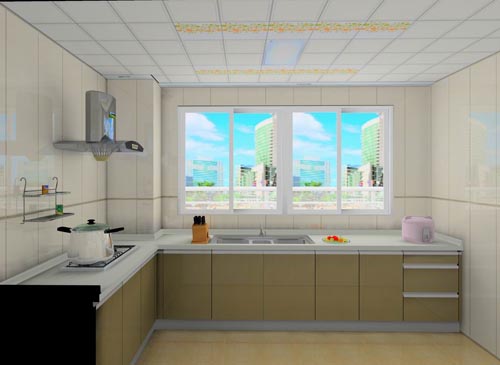 In today's integrated ceiling industry, plagiarism has continued to linger. For the Chinese market that is still in its early stages of development, although the phenomenon of plagiarism is an unavoidable stage of maturity, due to the frequent lawsuit lawsuits regarding plagiarism, public concern about this issue once again reaches a peak. Why is the phenomenon of plagiarism in the integrated ceiling industry so embarrassing? Industry insiders give the following four reasons.
In today's integrated ceiling industry, plagiarism has continued to linger. For the Chinese market that is still in its early stages of development, although the phenomenon of plagiarism is an unavoidable stage of maturity, due to the frequent lawsuit lawsuits regarding plagiarism, public concern about this issue once again reaches a peak. Why is the phenomenon of plagiarism in the integrated ceiling industry so embarrassing? Industry insiders give the following four reasons. 1. The protection of the Patent Law of the People's Republic of China is limited to the appearance of the product. This protection is limited to the appearance of the product. Only if the appearance of the product has a similarity rate of more than 80%, can it be confirmed as copying or counterfeiting the appearance of the product. This means that counterfeiters can easily avoid tort penalties by slightly modifying the process and shape of the product. In addition, if the company wants to obtain protection for its own products, the premise is that the product has applied for appearance patents.
2. Longer lawsuit compensation amount Due to the relatively low compensation amount and long time span of the patent lawsuit of the building materials industry such as integrated ceiling, some integrated ceiling companies prefer to settle in private when faced with patent infringement. It is also because the cost of rights protection is too high. In the integrated ceiling industry, there is a popular saying that “starve to death, not to die, not to dieâ€. If you fight for a product and someone else, it will take at least one year before and after, and your product life cycle is only half a year. If your lawsuit wins, your product will be out of date.
3. High research and development costs According to relevant data, although China is a big country in household manufacturing and exports, the quality of technical talents is far from satisfying social needs. People in the industry believe that the reason why many integrated ceiling companies' product design is counterfeit is due to cost-saving considerations. These companies believe that instead of hiring a designer with a high salary, to bear the greater cost risk, it is better to go to the domestic integrated ceiling store to copy the economical and efficient.
"A company that develops a new series of products needs a lot of capital in the early stages, and has a long period from research and development to launching the market. Moreover, new products may not be successful after they are listed. This is also a certain risk. Small and medium-sized integrated ceiling companies are afraid to No capital to take this risk, they would rather follow up and imitate the large-scale hot new products of large companies, get a pen for a stroke, and then form a serious product homogeneity phenomenon.†Anonymous industry insiders said that counterfeiting It is impossible to reverse the phenomenon in the short term.
4. Patent applications are time-consuming and labor-intensive. “A lot of companies are reluctant to apply for patents because of complicated procedures and high time costs,†said a well-known designer in the industry who has been sticking to the original for years. As for the complexity of the procedures, the designer said: "A few months can be frustrated by filling a form. Forms don't correspond to what the company has. There are a lot of things that need to be compiled. It takes energy and time."
What makes her feel even more troublesome is that the patents on the appearance of integrated ceiling products have limitations on the limitation period. The designer stated that she and her team needed at least one or two years to develop a product. If we go through a lengthy patent application process, “when the product is available in volume, the product’s patent expiration period is approaching.â€
In addition to the above four main reasons, the consumer's "spending small money to buy a big brand" mentality also provides a living environment for counterfeit integrated ceilings. When counterfeiting was discovered, the cost of litigation that was not worth the loss was also deterred by rights protection companies.
Venous cannula is also a deep venous puncture catheter. The method is to select the appropriate puncture site and insert the needle under the skin, and insert the needle with negative pressure until the dark red blood is absorbed, indicating that the needle has entered the vein, and the guide wire is inserted. Withdraw the puncture needle to leave the guide wire in the blood vessel, and then insert the venous catheter that needs to be indwelled along the guide wire, then exit the guide wire, inject diluted heparin saline and fix the catheter, the deep venous catheterization is completed. The veins for puncture and catheterization are usually selected clinically, including the subclavian vein, internal jugular vein, and femoral vein. After the puncture catheter is indwelled, attention must be paid to the care of the puncture site to avoid infection with thrombus or catheter falling off.
venous cannulation,best veins for cannulation,venous cannulation set,venous cannulation technique
Yong Yue Medical Technology(Kunshan) Co.,Ltd , https://www.yongyuetube.com